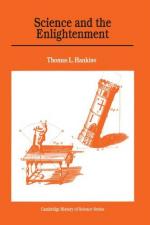
|
| Name: _________________________ | Period: ___________________ |
This quiz consists of 5 multiple choice and 5 short answer questions through Chapter 6, The Moral Sciences.
Multiple Choice Questions
1. According to the narrator in Chapter 1, who was one of the originators of the mechanical philosophy who believed there were no forces or powers in matter?
(a) Leibniz.
(b) Descartes.
(c) Carnot.
(d) Bernoulli.
2. The narrator explains in Chapter 4 that the most popular textbooks in France during the first half of the eighteenth century were those of ________ and ________.
(a) Boerhaave / Lemery.
(b) Stahl / Marggraf / Rouelle.
(c) Cullen / Black.
(d) Roi / Lavoisier.
3. Who carried rational mechanics to the highest point of generality and abstraction that it was to reach during the Enlightenment?
(a) Lagrange.
(b) Daniel.
(c) Hermann.
(d) Diderot.
4. Who had written a preface to the second edition of the "Principia," supposedly with Newton's blessing, that described gravity as a force acting at a distance without any intervening medium?
(a) Roger Cortes.
(b) Robert Boyle.
(c) James Butler.
(d) Henry Oldenburg.
5. In 1688, who had shown that the insect larva, pupa, and imago can exist simultaneously, all nested one within the other?
(a) Hertwig.
(b) Malebranche.
(c) Von Baer.
(d) Swammerdam.
Short Answer Questions
1. Who was France's greatest hero of the Enlightenment partly because he was from England, the source of free thought and liberty and partly because he had solved the riddle of the planets, showing that their motions obeyed the same laws as motions on earth?
2. The conversion of 'sGravesande confused the ideological debate because he was one of the leading supporters of ________ philosophy on the Continent.
3. ________ theory entered into law not only in the making of contracts but also in the determination of guilt and innocence.
4. What was the name of the curve traced by the end of a string as it is unwrapped from another curve found in Chapter 2?
5. In Chapter 1, who claimed that his "principle of least action" proved the existence of God?
|
This section contains 296 words (approx. 1 page at 300 words per page) |

|




